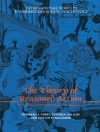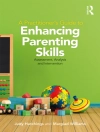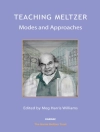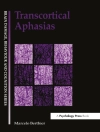Have you ever wanted to know more about the work of Carl Jung but not quite known how to gain access to it? Although Jung writes beautifully in his 18 Volumes of COLLECTED WORKS they are a bit intimidating as a starting point. Jung at Heart: Tools for Psychological Hygiene‘ could well be the gateway you have been looking for. Chapter by chapter it deals with the key concepts that Carl Jung introduced to the world. Words like introvert, extravert, complex, archetype, projection, all already familiar, become more clear in their meaning and gain a new practical application. Using many quotes from Jung’s own writing, thus giving the reader some sense of the man himself, this book is written for the ordinary person and is offered as a toolkit for psychological growth and self-awareness. Psychological hygiene is something we can practice. When we do, we attain a new level of contentment. Understanding ourselves and others more can only enrich us as we explore our own unique place in the world. Jung at Heart‘ is a manual to use on the journey.
Inhaltsverzeichnis
INTRODUCTION
Why Yet Another Book on Jung?
Poem: The Ninth Wave
Ch1: Complexes
The Engines of the Psyche
Poem: Arainn
Complexes
Structure of the Psyche
Archetypes
How Deep Do You Go?
Collective Complexes in the Outer World
The Roman Catholic Church as a Complex
Ch.2 Psychic Energy
The Fuel of the Psyche
Poem: Soul Peace
Canalisation of Psychic Energy
The Infantile Mentality
The Parental Complex
Transference
Transference onto Institutions
Ch.3: Dreams
The Messengers of the Unconscious
Poem: How Much Tenderness Can You Bear
The Compensatory Function of Dreams
Interpreting Dreams
Subjective or Objective Interpretation?
Assimilating the Dream Contents
The Prospective Function of a Dream
Negative Compensatory Dreams
Reaction Dreams
The Structure of Dreams
Little Dreams and Big Dreams
Active Imagination
Ch.4: A Psychology of Types
Befriending the Other
Poem: The Dinner Party
Introvert and Extravert
Extraverted Type – The Conscious Attitude
Unconscious Attitude
Introverted Type – The Conscious Attitude
Unconscious Attitude
The Structure of the Functions
The Inferior Function
Assimilating the Inferior Function
Ch.5: The Function Types Described
There are Many Ways of Seeing the World
Poem: Suffer Fools Gladly
The Four Rational Types
Extravert Thinking
Introvert Thinking
Extravert Feeling
Introvert Feeling
The Four Irrational Types
Extravert Sensation
Introvert Sensation
Extravert Intuitive
Introvert Intuitive
Ch.6: The Process of Individuation
The Pattern of Psychic Growth
Poem: Impossible Dream
Ch.7: Shadow and Evil
The Heart of Darkness
Poem: The Coward’s Wish
What is Shadow?
Recognising the Shadow
When Under Pressure
Humour
Impulsive Acts
Slips of the Tongue
Projections
How Other People See Us
Dreams, Fantasies and Literature
Confronting the Shadow
Evil
Different Types of Evil
Ch.8: Animus
The Lover Within
Poem: Amergin
Animus Accessible to Both Genders
Separating Animus Out from the Function Types
Stages of Psychological Development
The Mother-Influenced or Mother-Bound Woman and her Animus
The Father-Influenced or Father-Bound Woman and her Animus
Development of the Animus Beyond the Father and Mother Stage
The Animus Problem
Animus as the Archetype of Meaning
Ch.9: Anima
Giving Back Soul to the World
Poem: From Clifden Onwards
How Anima is Traditionally Seen in Jungian Thought
Sources for Anima in a Man
Origin of the Word Anima
Marie-Louise von Franz on the Anima
Slaying the Dragon
Anima is All of the Above and Much More Than
Anima as the Archetype
Women and Anima
Anima in a Woman’s Psyche
Giving Back Soul to the World
Integration of the Anima
Experience of the Anima
The Syzygy
Ch.10: Reflections on Self
That Which Has No Opposite
Poem: Wild Place
CONCLUSION
Poem: After The Rain
Appendix 1
Appendix 2
BIBLIOGRAPHY
INDEX
Über den Autor
Tess Harper-Molloy has lived in the West of Ireland since 1985. With her husband and four children she has worked a small-holding with gardens and animals, built two houses and worked with and mentored young people from all over the world in self-sufficiency. Her writing and poetry has been published in various magazines, including The AISLING Magazine, which she co-founded and co-edited. Her poetry has been published in The Irish Times, Women’s Work VI, The Globalisation of God and Burning the Midnight Oil.












